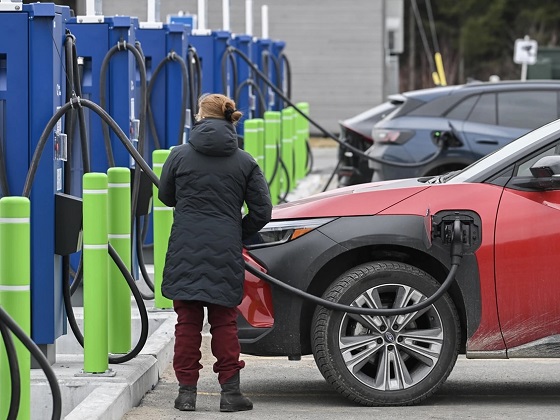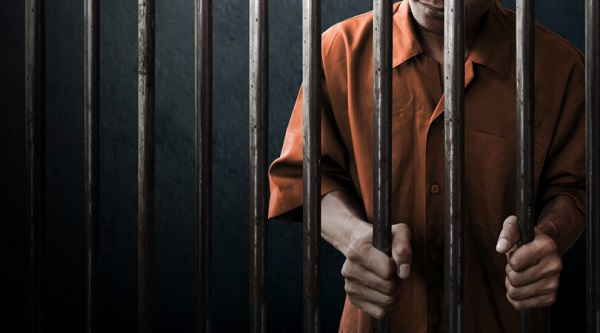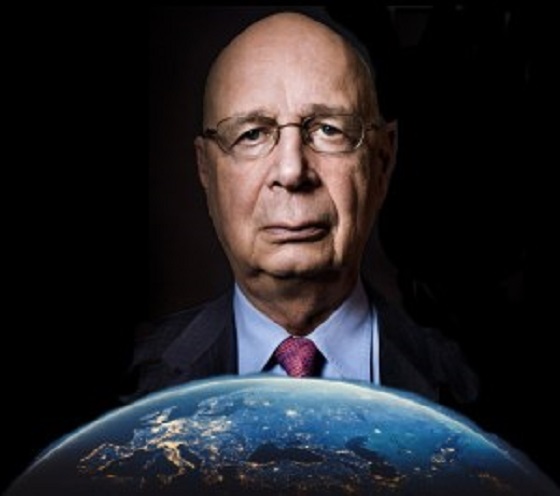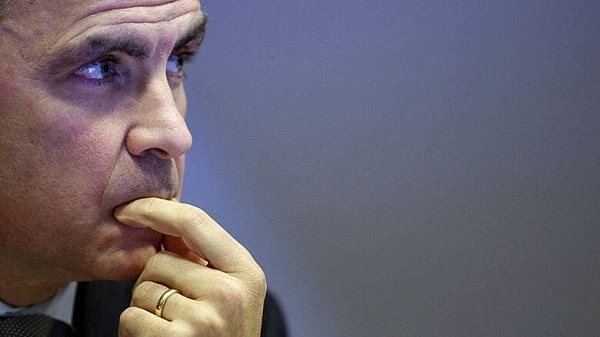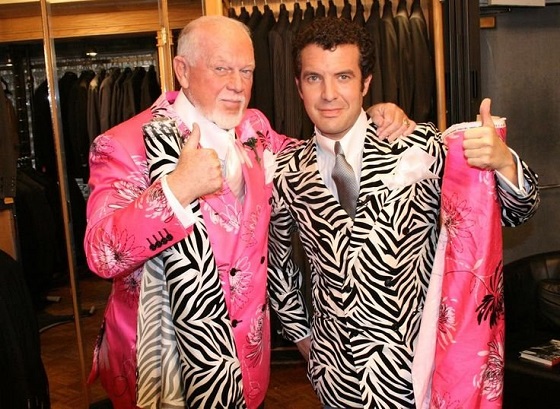Brownstone Institute
The Economic Disaster of the Pandemic Response
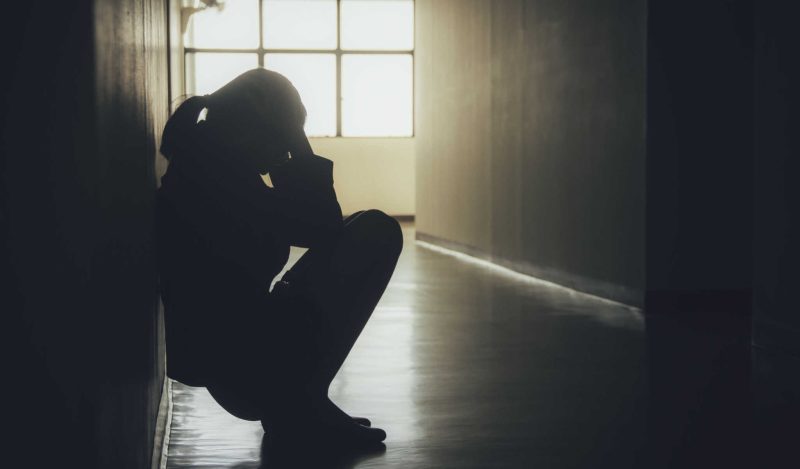
This article originally published by the Brownstone Institute
BY
On April 15, 2020, a full month after the President’s fateful news conference that greenlighted lockdowns to be enacted by the states for “15 Days to Flatten the Curve,” Donald Trump had a revealing White House conversation with Anthony Fauci, the head of the National institute for Allergy and Infectious Disease who had already become the public face of the Covid response.
“I’m not going to preside over the funeral of the greatest country in the world,” Trump wisely said, as reported in Jared Kushner’s book Breaking History. Two weeks of lockdown was over and the promised Easter opening blew right by too, Trump was done. He also suspected that he had been misled and was no longer speaking to coronavirus coordinator Deborah Birx.
“I understand,” Fauci responded meekly. “I just do medical advice. I don’t think about things like the economy and the secondary impacts. I’m just an infectious diseases doctor. Your job as president is to take everything else into consideration.”
That conversation both reflected and entrenched the tone of the debate over the lockdowns and vaccine mandates and eventually the national crisis that they precipitated. In these debates in the early days, and even today, the idea of “the economy” – viewed as mechanistic, money-centered, mostly about the stock market, and detached from anything truly important – was pitted against public health and lives.
You choose one or the other. You cannot have both. Or so they said.
Pandemic Practice
Also in those days, it was widely believed, stemming from a strange ideology hatched 16 years earlier, that the best approach to pandemics was to institute massive human coercion like we have never before experienced. The theory was that if you make humans behave like non-player characters in computer models, you can keep them from infecting each other until a vaccine arrives which will eventually wipe out the pathogen.
The new lockdown theory stood in contrast to a century of pandemic advice and practice from public-health wisdom. Only a few cities tried coercion and quarantine to deal with the 1918 pandemic, mostly San Francisco (also the home of the first Anti-Mask League) whereas most just treated disease person by person. The quarantines of that period failed and so landed in disrepute. They were not tried again in the disease scares (some real, some exaggerated) of 1929, 1940-44, 1957-58, 1967-68, 2003, 2005, or 2009. In those days, even the national media urged calm and therapeutics during each infectious-disease scare.
Somehow and for reasons that should be discussed – it could be intellectual error, political priorities, or some combination – 2020 became the year of an experiment without precedent, not only in the US but all over the world with the exception of perhaps five nations among which we can include the state of South Dakota. The sick and the well were quarantined, along with stay-at-home orders, domestic capacity limits, and business, school, and church shutdowns,
Nothing turned out according to plan. The economy can be turned off using coercion but the resulting trauma is so great that turning it on again is not so easy. Instead, thirty months later, we face an economic crisis without precedent in our lifetimes, the longest period of declining real income in the post-war period, a health and educational crisis, an exploding national debt plus inflation at a 40-year high, continued and seemingly random shortages, dysfunction in labor markets that defies all models, the breakdown of international trade, a collapse in consumer confidence not seen since we have these numbers, and a dangerous level of political division.
And what happened to Covid? It came anyway, just as many epidemiologists predicted it would. The stratified impact of medically significant outcomes was also predictable based on what we knew from February: the at-risk population was largely the elderly and infirmed. To be sure, most everyone would eventually met the pathogen with varying degrees of severity: some people shook it off in a couple of days, others suffered for weeks, and others perished. Even now, there is grave uncertainty about the data and causality due to the probability of misattribution due to both faulty PCR testing and financial incentives given out to hospitals.
Tradeoffs
Even if lockdowns had saved lives over the long term– the literature on this overwhelming suggests that the answer is no – the proper question to have asked was: at what cost? The economic question was: what are the tradeoffs? But because economics as such was shelved for the emergency, the question was not raised by policy makers. Thus did the White House on March 16, 2020, send out the most dreaded sentence pertaining to economics that one can imagine: “bars, restaurants, food courts, gyms, and other indoor and outdoor venues where groups of people congregate should be closed.”
The results are legion. The lockdowns kicked off a whole range of other policy disastrous decisions, among which an epic bout of government spending. What we are left with is a national debt that is 121% of GDP. This compares to 35% of GDP in 1981 when Ronald Reagan correctly declared it a crisis. Government spending in the Covid response amounted to at least $6 trillion above normal operations, creating debt that the Federal Reserve purchased with newly created money nearly dollar for dollar.

Money Printing
From February May 2020, M2 increased by an average of $814.3 billion per month. On May 18, 2020, M2 was rising 22% year over year, compared with only 6.7% from March that year. It was not yet the peak. That came after the new year, when on February 22, 2021, the M2 annual rate of increase reached a staggering 27.5%.
At the very same time, the velocity of money behaved as one would expect in a crisis of this sort. It plummeted an incredible 23.4% in the second quarter. A crashing rate at which money is being spent puts deflationary pressure on prices regardless of what happens with money supply. In this case, the falling velocity was a temporary salvation. It pushed the bad effects of this quantitative easing – to invoke a euphemism from 2008 – off into the future.

That future is now. The eventual result is the highest inflation in 40 years, which is not slowing down but accelerating, at least according to the October 12, 2022 Producer Price Index, which is hotter than it has been in months. It is running ahead of the Consumer Price Index, which is a reversal from earlier in the lockdown period. This new pressure on producers heavily impacted the business environment and created recessionary conditions.

A Global Problem
Moreover, this was not just a US problem. Most nations in the world followed the same lockdown strategy while attempting to substitute spending and printing for real economic activity. The cause-and-effect relationship holds the world over. Central banks coordinated and their societies all suffered.

The Fed is being called up daily to step up its lending to foreign central banks through the discount window for emergency loans. It is now at the highest level since Spring 2020 lockdowns. The Fed lent $6.5 billion to two foreign central banks in one week in October 2022. The numbers are truly scary and foreshadow a possible international financial crisis.
The Great Head Fake
But back in the spring and summer of 2020, we seemed to experience a miracle. Governments around the country had crushed social functioning and free enterprise and yet real income went soaring. Between February 2020 and March 2021, real personal income during a time with low inflation was up by $4.2 trillion. It felt like magic: a lockdown economy but riches were pouring in.
And what did people do with their new-found riches? There was Amazon. There was Netflix. There was the need for all sorts of new equipment to feed our new existence as digital everything. All these companies benefited enormously while others suffered. Even so we paid off credit card debt. And much of the stimulus was socked away as savings. The first stimulus went straight to the bank: the personal savings rate went from 9.6% to 33% in the course of just one month.
After the summer, people started to get the hang of getting free money from government dropped into their bank accounts. The savings rate started to fall: by November 2020, it was back down to 13.3%. Once Joseph Biden came to power and unleashed another round of stimulus, the savings rate went back up to 26.3%. And just fast forward to the present and we find people saving 3.5% of income, which is half the historical norm dating back to 1960 and about where it was in 2005 when low interest rates fed the housing boom that went bust in 2008. Meanwhile credit card debt is now soaring, even though interest rates are 17% and higher.
In other words, we experienced the wildest swing from shocking riches to rags in a very short period of time. The curves all inverted once the inflation came along to eat out the value of the stimulus. All that free money turned out not to be free at all but rather very expensive. The dollar of January 2020 is now worth only $0.87, which is to say that the stimulus spending covered by Federal Reserve printing stole $0.13 of every dollar in the course of only 2.5 years.
It was one of the biggest head fakes in the history of modern economics. The pandemic planners created paper prosperity to cover up for the grim reality all around. But it did not and could not last.
Right on schedule, the value of the currency began to tumble. Between January 2021 and September 2022, prices increased 13.5% across the board, while costing the average American family $728 in September alone. Even if inflation stops today, the inflation already in the bag will cost the American family $8,739 over the next 12 months, leaving less money to pay off soaring credit card debt.

Let’s return to the salad days before the inflation hit and when the Zoom class experienced delight at their new riches and their work-from-home luxuries. On Main Street, matters looked very different. I visited two medium-sized towns in New Hampshire and Texas over the course of the summer of 2020. I found nearly all businesses on Main Street boarded up, malls empty but for a few masked maintenance men, and churches silent and abandoned. There was no life at all, only despair.
The look of most of America in those days – not even Florida was yet open – was post-apocalyptic, with vast numbers of people huddled at home either alone or with immediate families, fully convinced that a universally deadly virus was lurking outdoors and waiting to snatch the life of anyone foolish enough to seek exercise, sunshine, or, heaven forbid, fun with friends, much less visiting the elderly in nursing homes, which was verboten. Meanwhile, the CDC was recommending that any “essential business” install walls of plexiglass and paste social distancing stickers everywhere where people would walk. All in the name of science.
I am very aware that all of this sounds utterly ridiculous now, but I assure you that it was serious at the time. Several times, I was personally screamed at for walking only a few feet into a grocery aisle that had been designated by stickers to be one way in the other direction. Also in those days, at least in the Northeast, enforcers among the citizenry would fly drones around the city and countryside looking for house parties, weddings, or funerals, and snap images to send to the local media, which would dutifully report the supposed scandal.
These were times when people insisted on riding elevators alone, and only one person at a time was permitted to walk through narrow corridors. Parents masked up their kids even though the kids were at near zero risk, which we knew from data but not from public health authorities. Incredibly, nearly all schools were closed, thus forcing parents out of the office back home. Homeschooling, which has long existed under a legal fog, suddenly became mandatory.
Just to illustrate how crazy it all became, a friend of mine arrived home from a visit out of town and his mother demanded that he leave his Covid-infested bags on the porch for three days. I’m sure you have your own stories of absurdity, among which was the masking of everyone, the enforcement of which went from stern to ferocious as time passed.
But these were the days when people believed the virus was outdoors and so we should stay in. Oddly, this changed over time when people decided that the virus was indoors and so we should be outdoors. When New York City cautiously permitted dining in commercial establishments, the mayor’s office insisted that it could only be outdoors, so many restaurants built an outdoors version of indoors, complete with plastic walls and heating units at a very high expense.
In those days, I had some time to kill waiting for a train in Hudson, New York, and went to a wine bar. I ordered a glass at the counter and the masked clerk handed it to me and pointed for me to go outside. I said I would like to drink it inside since it was freezing and miserable outside. I pointed out that there was a full dining room right there. She said I could not because of Covid.
Is this a law, I asked? She said no it is just good practice to keep people safe.
“Do you really think there is Covid in that room?” I asked.
“Yes,” she said in all seriousness.
At this point, I realized we had fully moved from government-mandated mania to a real popular delusion for the ages.
The commercial carnage for small business has yet to be thoroughly documented. At least 100,000 restaurants and stores in Manhattan alone closed, commercial real estate prices crashed, and big business moved in to scoop up bargains. Policies were decidedly disadvantageous to small businesses. If there were commercial capacity restrictions, they would kill a coffee shop but a large franchise all-you-eat buffet that holds 300 would probably be fine.
So too with industries in general: big tech including Zoom and Amazon thrived, but hotels, bars, restaurants, malls, cruise ships, theaters, and anyone without home delivery suffered terribly. The arts were devastated. In the deadly Hong Kong flu of 1968-69, we had Woodstock but this time we had nothing but YouTube, unless you opposed Covid restrictions in which case your song was deleted and your account blasted into oblivion.
Health Care Industry
To talk about the healthcare industry, let’s return to the early days of the frenzy of the Spring of 2020. An edict had gone out from the Centers for Disease Control and Prevention to all public health officials in the country that strongly urged the closing of all hospitals to everyone but non-elective surgeries and Covid patients, which turned out to exclude nearly everyone who would routinely show up for diagnostics or other normal treatments.
As a result, hospital parking lots emptied out from sea to shining sea, a most bizarre sight to see given that there was supposed to be a pandemic raging. We can see this in the data. The healthcare sector employed 16.4 million people in early 2020. By April, the entire sector lost 1.6 million employees, which is an astonishing exodus by any historical standard. Nurses in hundreds of hospitals were furloughed. Again, this happened during a pandemic.
In another strange twist that future historians will have a hard time trying to figure out, health care spending itself fell off a cliff. From March to May 2020, health care spending actually collapsed by $500 billion or 16.5%.

This created an enormous financial problem for hospitals in general, which, after all, are economic institutions too. They were bleeding money so fast that when the federal government offered subsidies of 20 percent above other respiratory ailments if the patient could be declared Covid positive, hospitals jumped at the chance and found cases galore, which the CDC was happy to accept at face value. Compliance with guidelines became the only path toward restoring profitability.
The throttling of non-Covid services included the near abolition of dentistry that went on for months from Spring through Summer. In the midst of this, I worried that I needed a root canal. I simply could not find a dentist in Massachusetts who would see me. They said every patient first needs a cleaning and thorough examination and all those have been canceled. I had the bright idea of traveling to Texas to get it done but the dentist there said they were restricted by law to make sure all patients from out of state quarantine in Texas for two weeks, time I could not afford. I thought about suggesting to my mother, who was making the appointment, that she simply lie about the date of my arrival but thought better of it given her scruples.
It was a time of great public insanity, not stopped and even fomented by public health bureaucrats. The abolition of dentistry for a time seemed to comply completely with the injunction of the New York Times on February 28, 2020. “To Take on the Coronavirus, Go Medieval on It,” the headline read. We did, even to the point of abolishing dentistry, publicly shaming the diseased on grounds that getting Covid was surely a sign of noncompliance and civic sin, and instituting a feudal system of dividing workers by essential and nonessential.
Labor Markets
Exactly how it came to be that the entire workforce came to be divided this way remains a mystery to me but the guardians of the public mind seemed not to care a whit about it. Most of the delineated lists at the time said that you could keep operating if you qualified as a media center. Thus for two years did the New York Times instruct its readers to stay home and have their groceries delivered. By whom, they did not say, nor did they care because such people are not apparently among their reader base. Essentially, the working classes were used as fodder to obtain herd immunity, and then later subjected to vaccine mandates despite superior natural immunity.
Many, as in millions, were later fired for not complying with mandates. We are told that unemployment today is very low and that many new jobs are being filled. Yes, and most of those are existing workers getting second and third jobs. Moonlighting and side gigging are now a way of life, not because it is a blast but because the bills have to be paid.
The full truth about labor markets requires that we look at the labor participation rate and the worker-population ratio. Millions have gone missing. These are working women who still cannot find child care because that industry never recovered, and so participation is back at 1988 levels. They are early retirements. They are 20 somethings who moved home and went on unemployment benefits. There are many more who have just lost the will to achieve and build a future.

The supply chain breakages need their own discussion. The March 12, 2020, evening announcement by President Trump that he would block all travel from Europe, UK, and Australia beginning in five days from then started a mad scramble to get back to the US. He also misread the teleprompter and said that the ban would also apply to goods. The White House had to correct the statement the next day but the damage was already done. Shipping came to a complete standstill.
Supply Chains and Shortages
Most economic activity stopped. By the time the fall relaxation came and manufacturers started reordering parts, they found that many factories overseas had already retooled for other kinds of demand. This particularly affected the semiconductor industry for automotive manufacturing. Overseas chip makers had already turned their attention to personal computers, cellphones, and other devices. This was the beginning of the car shortage that sent prices through the roof. This created a political demand for US-based chip production which has in turn resulted in another round of export and import controls.
These sorts of problems have affected every industry without exception. Why the paper shortage today? Because so many of the paper factories which shifted to plywood after that had gone sky-high in price to feed the housing demand created by generous stimulus checks.
We could write books listing all the economic calamities directly caused by the disastrous pandemic response. They will be with us for years, and yet even today, not many people fully grasp the relationship between our current economic hardships, and even the growing international tensions and breakdown of trade and travel, and the brutality of the pandemic response. It is all directly related.
Anthony Fauci said at the outset: “I don’t think about things like the economy and the secondary impacts.” And Melinda Gates said the same in a December 4, 2020 interview with the New York Times: “What did surprise us is we hadn’t really thought through the economic impacts.”
The wall of separation posited between “economics” and public health did not hold in theory or practice. A healthy economy is indispensable for healthy people. Shutting down economic life was a singularly bad idea for taking on a pandemic.
Conclusion
Economics is about people in their choices and institutions that enable them to thrive. Public health is about the same thing. Driving a wedge between the two surely ranks among the most catastrophic public-policy decisions of our lifetimes. Health and economics both require the nonnegotiable called freedom. May we never again experiment with its near abolition in the name of disease mitigation.
This is based on a presentation at Hillsdale College, October 20, 2022, to appear in a shortened version in IMPRIMUS
Brownstone Institute
FDA Exposed: Hundreds of Drugs Approved without Proof They Work

From the Brownstone Institute
By
The US Food and Drug Administration (FDA) has approved hundreds of drugs without proof that they work—and in some cases, despite evidence that they cause harm.
That’s the finding of a blistering two-year investigation by medical journalists Jeanne Lenzer and Shannon Brownlee, published by The Lever.
Reviewing more than 400 drug approvals between 2013 and 2022, the authors found the agency repeatedly ignored its own scientific standards.
One expert put it bluntly—the FDA’s threshold for evidence “can’t go any lower because it’s already in the dirt.”
A System Built on Weak Evidence
The findings were damning—73% of drugs approved by the FDA during the study period failed to meet all four basic criteria for demonstrating “substantial evidence” of effectiveness.
Those four criteria—presence of a control group, replication in two well-conducted trials, blinding of participants and investigators, and the use of clinical endpoints like symptom relief or extended survival—are supposed to be the bedrock of drug evaluation.
Yet only 28% of drugs met all four criteria—40 drugs met none.
These aren’t obscure technicalities—they are the most basic safeguards to protect patients from ineffective or dangerous treatments.
But under political and industry pressure, the FDA has increasingly abandoned them in favour of speed and so-called “regulatory flexibility.”
Since the early 1990s, the agency has relied heavily on expedited pathways that fast-track drugs to market.
In theory, this balances urgency with scientific rigour. In practice, it has flipped the process. Companies can now get drugs approved before proving that they work, with the promise of follow-up trials later.
But, as Lenzer and Brownlee revealed, “Nearly half of the required follow-up studies are never completed—and those that are often fail to show the drugs work, even while they remain on the market.”
“This represents a seismic shift in FDA regulation that has been quietly accomplished with virtually no awareness by doctors or the public,” they added.
More than half the approvals examined relied on preliminary data—not solid evidence that patients lived longer, felt better, or functioned more effectively.
And even when follow-up studies are conducted, many rely on the same flawed surrogate measures rather than hard clinical outcomes.
The result: a regulatory system where the FDA no longer acts as a gatekeeper—but as a passive observer.
Cancer Drugs: High Stakes, Low Standards
Nowhere is this failure more visible than in oncology.
Only 3 out of 123 cancer drugs approved between 2013 and 2022 met all four of the FDA’s basic scientific standards.
Most—81%—were approved based on surrogate endpoints like tumour shrinkage, without any evidence that they improved survival or quality of life.
Take Copiktra, for example—a drug approved in 2018 for blood cancers. The FDA gave it the green light based on improved “progression-free survival,” a measure of how long a tumour stays stable.
But a review of post-marketing data showed that patients taking Copiktra died 11 months earlier than those on a comparator drug.
It took six years after those studies showed the drug reduced patients’ survival for the FDA to warn the public that Copiktra should not be used as a first- or second-line treatment for certain types of leukaemia and lymphoma, citing “an increased risk of treatment-related mortality.”
Elmiron: Ineffective, Dangerous—And Still on the Market
Another striking case is Elmiron, approved in 1996 for interstitial cystitis—a painful bladder condition.
The FDA authorized it based on “close to zero data,” on the condition that the company conduct a follow-up study to determine whether it actually worked.
That study wasn’t completed for 18 years—and when it was, it showed Elmiron was no better than placebo.
In the meantime, hundreds of patients suffered vision loss or blindness. Others were hospitalized with colitis. Some died.
Yet Elmiron is still on the market today. Doctors continue to prescribe it.
“Hundreds of thousands of patients have been exposed to the drug, and the American Urological Association lists it as the only FDA-approved medication for interstitial cystitis,” Lenzer and Brownlee reported.
“Dangling Approvals” and Regulatory Paralysis
The FDA even has a term—”dangling approvals”—for drugs that remain on the market despite failed or missing follow-up trials.
One notorious case is Avastin, approved in 2008 for metastatic breast cancer.
It was fast-tracked, again, based on ‘progression-free survival.’ But after five clinical trials showed no improvement in overall survival—and raised serious safety concerns—the FDA moved to revoke its approval for metastatic breast cancer.
The backlash was intense.
Drug companies and patient advocacy groups launched a campaign to keep Avastin on the market. FDA staff received violent threats. Police were posted outside the agency’s building.
The fallout was so severe that for more than two decades afterwards, the FDA did not initiate another involuntary drug withdrawal in the face of industry opposition.
Billions Wasted, Thousands Harmed
Between 2018 and 2021, US taxpayers—through Medicare and Medicaid—paid $18 billion for drugs approved under the condition that follow-up studies would be conducted. Many never were.
The cost in lives is even higher.
A 2015 study found that 86% of cancer drugs approved between 2008 and 2012 based on surrogate outcomes showed no evidence that they helped patients live longer.
An estimated 128,000 Americans die each year from the effects of properly prescribed medications—excluding opioid overdoses. That’s more than all deaths from illegal drugs combined.
A 2024 analysis by Danish physician Peter Gøtzsche found that adverse effects from prescription medicines now rank among the top three causes of death globally.
Doctors Misled by the Drug Labels
Despite the scale of the problem, most patients—and most doctors—have no idea.
A 2016 survey published in JAMA asked practising physicians a simple question—what does FDA approval actually mean?
Only 6% got it right.
The rest assumed that it meant the drug had shown clear, clinically meaningful benefits—such as helping patients live longer or feel better—and that the data was statistically sound.
But the FDA requires none of that.
Drugs can be approved based on a single small study, a surrogate endpoint, or marginal statistical findings. Labels are often based on limited data, yet many doctors take them at face value.
Harvard researcher Aaron Kesselheim, who led the survey, said the results were “disappointing, but not entirely surprising,” noting that few doctors are taught about how the FDA’s regulatory process actually works.
Instead, physicians often rely on labels, marketing, or assumptions—believing that if the FDA has authorized a drug, it must be both safe and effective.
But as The Lever investigation shows, that is not a safe assumption.
And without that knowledge, even well-meaning physicians may prescribe drugs that do little good—and cause real harm.
Who Is the FDA Working for?
In interviews with more than 100 experts, patients, and former regulators, Lenzer and Brownlee found widespread concern that the FDA has lost its way.
Many pointed to the agency’s dependence on industry money. A BMJ investigation in 2022 found that user fees now fund two-thirds of the FDA’s drug review budget—raising serious questions about independence.

Yale physician and regulatory expert Reshma Ramachandran said the system is in urgent need of reform.
“We need an agency that’s independent from the industry it regulates and that uses high-quality science to assess the safety and efficacy of new drugs,” she told The Lever. “Without that, we might as well go back to the days of snake oil and patent medicines.”
For now, patients remain unwitting participants in a vast, unspoken experiment—taking drugs that may never have been properly tested, trusting a regulator that too often fails to protect them.
And as Lenzer and Brownlee conclude, that trust is increasingly misplaced.
- Investigative report by Jeanne Lenzer and Shannon Brownlee at The Lever [link]
- Searchable public drug approval database [link]
- See my talk: Failure of Drug Regulation: Declining standards and institutional corruption
Republished from the author’s Substack
Brownstone Institute
Anthony Fauci Gets Demolished by White House in New Covid Update
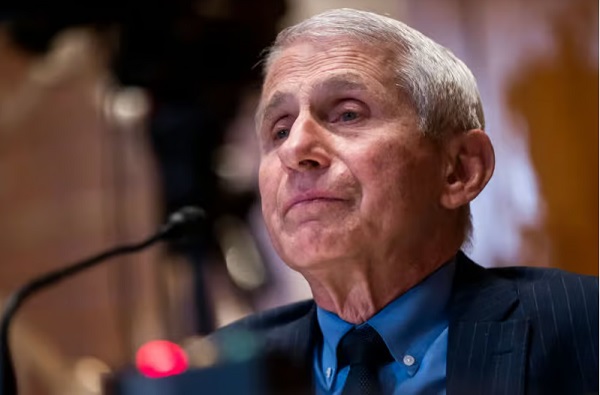
From the Brownstone Institute
By
Anthony Fauci must be furious.
He spent years proudly being the public face of the country’s response to the Covid-19 pandemic. He did, however, flip-flop on almost every major issue, seamlessly managing to shift his guidance based on current political whims and an enormous desire to coerce behavior.
Nowhere was this more obvious than his dictates on masks. If you recall, in February 2020, Fauci infamously stated on 60 Minutes that masks didn’t work. That they didn’t provide the protection people thought they did, there were gaps in the fit, and wearing masks could actually make things worse by encouraging wearers to touch their face.
Just a few months later, he did a 180, then backtracked by making up a post-hoc justification for his initial remarks. Laughably, Fauci said that he recommended against masks to protect supply for healthcare workers, as if hospitals would ever buy cloth masks on Amazon like the general public.
Later in interviews, he guaranteed that cities or states that listened to his advice would fare better than those that didn’t. Masks would limit Covid transmission so effectively, he believed, that it would be immediately obvious which states had mandates and which didn’t. It was obvious, but not in the way he expected.

And now, finally, after years of being proven wrong, the White House has officially and thoroughly rebuked Fauci in every conceivable way.
White House Covid Page Points Out Fauci’s Duplicitous Guidance
A new White House official page points out, in detail, exactly where Fauci and the public health expert class went wrong on Covid.
It starts by laying out the case for the lab-leak origin of the coronavirus, with explanations of how Fauci and his partners misled the public by obscuring information and evidence. How they used the “FOIA lady” to hide emails, used private communications to avoid scrutiny, and downplayed the conduct of EcoHealth Alliance because they helped fund it.
They roast the World Health Organization for caving to China and attempting to broaden its powers in the aftermath of “abject failure.”
“The WHO’s response to the COVID-19 pandemic was an abject failure because it caved to pressure from the Chinese Communist Party and placed China’s political interests ahead of its international duties. Further, the WHO’s newest effort to solve the problems exacerbated by the COVID-19 pandemic — via a “Pandemic Treaty” — may harm the United States,” the site reads.
Social distancing is criticized, correctly pointing out that Fauci testified that there was no scientific data or evidence to support their specific recommendations.
“The ‘6 feet apart’ social distancing recommendation — which shut down schools and small business across the country — was arbitrary and not based on science. During closed door testimony, Dr. Fauci testified that the guidance ‘sort of just appeared.’”
There’s another section demolishing the extended lockdowns that came into effect in blue states like California, Illinois, and New York. Even the initial lockdown, the “15 Days to Slow the Spread,” was a poorly reasoned policy that had no chance of working; extended closures were immensely harmful with no demonstrable benefit.
“Prolonged lockdowns caused immeasurable harm to not only the American economy, but also to the mental and physical health of Americans, with a particularly negative effect on younger citizens. Rather than prioritizing the protection of the most vulnerable populations, federal and state government policies forced millions of Americans to forgo crucial elements of a healthy and financially sound life,” it says.
Then there’s the good stuff: mask mandates. While there’s plenty more detail that could be added, it’s immensely rewarding to see, finally, the truth on an official White House website. Masks don’t work. There’s no evidence supporting mandates, and public health, especially Fauci, flip-flopped without supporting data.
“There was no conclusive evidence that masks effectively protected Americans from COVID-19. Public health officials flipped-flopped on the efficacy of masks without providing Americans scientific data — causing a massive uptick in public distrust.”
This is inarguably true. There were no new studies or data justifying the flip-flop, just wishful thinking and guessing based on results in Asia. It was an inexcusable, world-changing policy that had no basis in evidence, but was treated as equivalent to gospel truth by a willing media and left-wing politicians.
Over time, the CDC and Fauci relied on ridiculous “studies” that were quickly debunked, anecdotes, and ever-shifting goal posts. Wear one cloth mask turned to wear a surgical mask. That turned into “wear two masks,” then wear an N95, then wear two N95s.
All the while ignoring that jurisdictions that tried “high-quality” mask mandates also failed in spectacular fashion.

And that the only high-quality evidence review on masking confirmed no masks worked, even N95s, to prevent Covid transmission, as well as hearing that the CDC knew masks didn’t work anyway.
The website ends with a complete and thorough rebuke of the public health establishment and the Biden administration’s disastrous efforts to censor those who disagreed.
“Public health officials often mislead the American people through conflicting messaging, knee-jerk reactions, and a lack of transparency. Most egregiously, the federal government demonized alternative treatments and disfavored narratives, such as the lab-leak theory, in a shameful effort to coerce and control the American people’s health decisions.
When those efforts failed, the Biden Administration resorted to ‘outright censorship—coercing and colluding with the world’s largest social media companies to censor all COVID-19-related dissent.’”
About time these truths are acknowledged in a public, authoritative manner. Masks don’t work. Lockdowns don’t work. Fauci lied and helped cover up damning evidence.
If only this website had been available years ago.
Though, of course, knowing the media’s political beliefs, they’d have ignored it then, too.
Republished from the author’s Substack
-
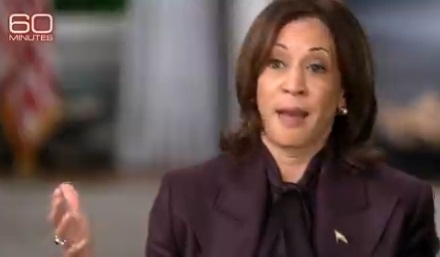
 International2 days ago
International2 days agoCBS settles with Trump over doctored 60 Minutes Harris interview
-
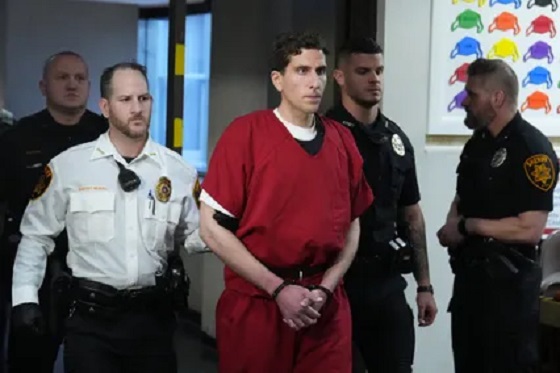
 Crime1 day ago
Crime1 day agoBryan Kohberger avoids death penalty in brutal killing of four Idaho students
-
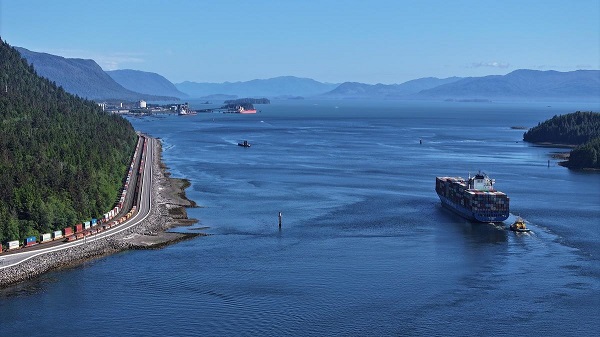
 Business2 days ago
Business2 days agoWhy it’s time to repeal the oil tanker ban on B.C.’s north coast
-

 Business2 days ago
Business2 days agoLatest shakedown attempt by Canada Post underscores need for privatization
-

 Energy2 days ago
Energy2 days agoIf Canada Wants to be the World’s Energy Partner, We Need to Act Like It
-

 Alberta2 days ago
Alberta2 days agoPierre Poilievre – Per Capita, Hardisty, Alberta Is the Most Important Little Town In Canada
-

 MxM News2 days ago
MxM News2 days agoUPenn strips Lia Thomas of women’s swimming titles after Title IX investigation
-

 COVID-191 day ago
COVID-191 day agoTop COVID doctor given one of Canada’s highest honors




